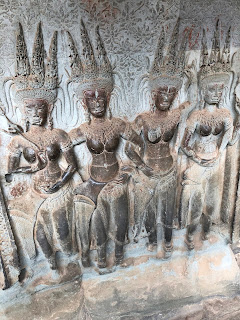He has been beatified as "Father of American Cycling." He's also been villified as the one who brought "Old World methods," if you know what I mean, to this side of the pond.
Edward Borysewicz passed away on Monday from COVID-19. Known as "Eddie B" to his proteges and detractors alike, he is best known for training and developing the first generation of American cyclists since World War I who challenged, and sometimes defeated, their European counterparts.
Born in Poland, he was a finalist for the Peace Race (often called "The Tour de France of the East") before a misdiagnosis of tuberculosis led to a treatment he didn't need--which, in turn, led to liver damage that ended his career. "I went in feeling like a rooster and came out feeling like a pigeon," he recalled. (It's been speculated that this "misdiagnosis" was retaliation for his father's outspoken anti-communism.) He continued to race, if not at the same level, and later turned to coaching.
In 1976, he accompanied the Polish team to the Montreal Olympics where Mieczyslaw Nowicki, one of the riders he coached, won two medals. From there, he took a vacation in the US, where by chance, he met Mike Fraysse.
It just happened that Mike Fraysse was the team manager for the US cycling squad. He also owned Park Cycle in Ridgefield Park, New Jersey. In addition to being one of the premier pro shops, and employing the likes of Francisco Cuevas and Pepi Limongi to build custom frames, Park Cycle served as a training facility for some budding talent.
He spoke no Polish. Eddie B spoke no English. So, on a ride, they talked about training and other things in French. It was there that both Fraysse and Eddie B saw an opportunity.
It just happened that the riders passing through Park Cycle included, or would come to include, Alexi Grewal, Andy Hampsten, Connie Carpenter, Davis Phinney, Beth and Eric Heiden, Betsy Davis and Rebecca Twigg. None of them would go to Moscow for the 1980 Olympics, as then-President Jimmy Carter imposed a boycott. However, when the Games came to L.A. in 1984--and the Soviet Bloc countries, in retaliation, boycotted--the stage was set for victories American cyclists hadn't experienced since at least their grandparents' youth.
 |
| Eddie Borysewicz with Greg LeMond, 2006. (Photo by Mitchel Clinton) |
The US team brought home glitter the Trumps would envy. Alexi Grewal won gold in the men's road race. Connie Carpenter took the same in the women's road race, with Rebecca Twigg winning the silver medal. Steve Hegg won gold in the individual pursuit while Mark Gorski and Nelson Vails (a former NYC messenger) finished 1-2 in the men's sprint. Hegg, David Grylls, Patrick McDonough, Leonard Nitz and Brent Emery would combine for a silver medal in the team pursuit. Nitz would also take bronze in the individual pursuit, which Ron Kiefel, Roy Knickman, Davis Phinney and Andy Weaver also won for the team time trial.
Before these victories, no American had won an Olympic medal in cycling since in 1912. Two years later, another Eddie B-coached rider achieved something that was thought impossible for an American rider. I am talking, of course, about Greg LeMond's first Tour de France win.
Rumors--some later substantiated--of doping and other risky practices have long beclouded the Tour and other major races. LeMond, throughout his career, denounced these practices because of the risks they posed, and denied having "juiced" himself. Although Lance Armstrong and others have attacked him, there has been no credible evidence of LeMond doping or otherwise cheating.
On the other hand, controversy would later descend upon the Olympic medalists when it emerged that some of them had received blood transfusions. While not illegal at the time, the US Cycling Federation banned it in January 1985. The transfusions were organized by Ed Burke, the Federation's athletic director, and Borysewicz claimed that they took place without his knowledge or approval. Nonetheless, he and Burke were fined.
Eddie B would continue to coach elite cyclists to victory, including Lance Armstrong. But he always proudest of LeMond, whom he called "a diamond." He also took pride in discovering riders like Twigg.
His biggest contributions to American cycling, however, may have been in changing the ways Americans approached cycling. First of all, he used his academic training to create more scientific methods of training and nutrition for his riders. Second, and perhaps more important, he helped to re-orient the mentality of American riders, and of the American public, toward cycling.
He didn't want John Howard, arguably the top male American cyclist of the 1970s, on his team because he had a "Texan" mentality: He was, Eddie believed, focused on his individual success. Americans of his generation, according to Borysewicz, did not share the European concept of cycling for and with a team. For all of their individual successes, he trained his cyclists to ride as a team, even if they were in individual pursuits like the sprint.
All of that, I believe, ended American cycling's inferiority complex. After the victories I mentioned, other American cyclists--and the American public--believed they could ride with the best in the world. That, perhaps, is Eddie Borysewicz's greatest legacy.





































